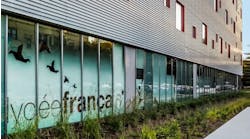Studies show that all-day kindergarten improves children’s academic performance in primary grades. For example, schools with students attending all-day kindergarten in 2004-05 improved their third-grade reading scores on the 2007-08 Pennsylvania System of School Assessment tests twice as much as schools without all-day programs, according to a 2009 Pennsylvania Partnerships for Children report.
School districts today are not fighting the trend toward more all-day kindergarten; many are embracing it. This is largely because teachers and administrators are increasingly being held accountable for students’ national test scores. School districts need to find opportunities to raise student test scores, and all-day kindergarten is one such opportunity.
While test scores are the key driver behind implementing this extended day program, there are other forces prompting interest in all-day kindergarten.
An economic reality driving the movement toward all-day kindergarten is the increasing pressure on both parents to generate a full-time employment level of income in many families. This makes arranging mid-day drop-offs or pick-ups difficult, if not impossible, for many parents with kindergarteners. In this respect, parents are thinking of kindergarten in the same vein as day care.
Impacts on Classroom Design
All-day kindergarten has several impacts on learning spaces. At a basic level, many school districts offering all-day kindergarten will find themselves short of not just teachers, but also classroom space. A district with three kindergarten classrooms used by a morning and afternoon class each will face such a shortage if a need arises for six all-day kindergarten classes. So, to begin with, some expansion or renovation will probably occur in most schools.
As public schools reach out to serve students with a wide variety of needs, the environments that we create for them must be increasingly agile and adaptive. Furniture must be moved and repositioned at a moment’s notice to accommodate activities from storytelling to reading to large-group exercises to individual discussions. One area of a classroom might be divided from other areas with soundproof walls and have a carpeted floor surfaces. Another area might have a tile floor surface to suit water-based play or messy art projects.
These spaces typically have their own entrances and exits to the outside. They tend to be larger than traditional classrooms and feature a non-traditional polygonal shape to accommodate multiple activities at one time. As with spaces used for early childhood education, restrooms typically are located nearby. Instead of desks and chairs, the children use tables and chairs to promote socialization and collaboration exercises.
Following an overall 21st-century educational trend, these spaces accommodate more classroom media than traditional half-day kindergarten classrooms. Also, because all-day kindergarten continues to serve the role of socializing children and enabling them to discover their creative talents in addition to developing their basic learning skills, these spaces need to be highly flexible.
Schools Transformed
The experience of one Chicago-area school district illustrates the design transformation that schools undergo when a greater commitment to all-day kindergarten is made.
Valley View School District 365U in southwest suburban Chicago made accommodations in all 12 of its elementary schools for an all-day kindergarten program that began in the 2012–13 school year. The motivation behind the move was improving student performance in the lower grades to avoid the need for intervention later. To make room for the new program, the district put additions on nine schools and renovated three others.
The new additions were designed to keep the kindergarteners in the same zone in the school buildings. The rooms are customized to each school and designed to be extremely lively, stimulating environments that make ample use of daylighting. The new spaces have a modern, casual look intended to stand out and indicate that something new and exciting is happening in the school district. Child-height casework with built-in benches and cubbies are positioned around framed views to the outside. Here, students can curl up with a book and enjoy some private time away from the more active instruction occurring in the rest of the room. The spaces are equipped with smart boards and wireless technology.
When it comes to designing schools and classrooms for all-day kindergarten, the guiding principle issimilar to what experts are finding out about education in general: no single approach is suitable for everybody. It is important to work closely with teachers, administrators, parents and local residents to design all-day kindergarten classrooms that address the needs of children as well as those who have a stake in their success. With such an approach, lives are transformed on a daily basis through well-thought-out and executed design.
Siepka is the pre-K to 12 design leader and senior designer, and Havens is senior vice president and director of design for Wight & Company, Darien, Ill.


